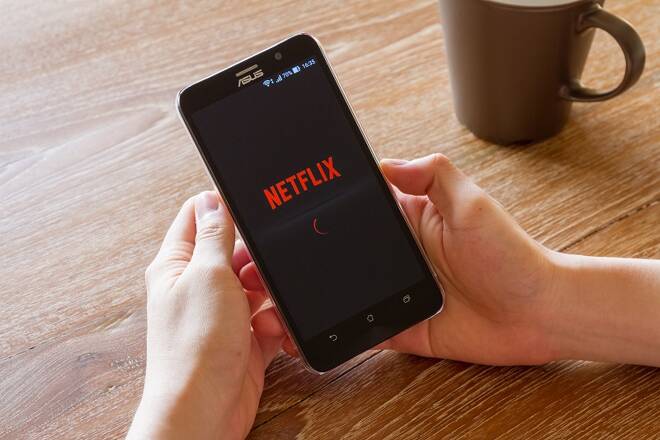Advertisement
Advertisement
Netflix Has a Unique Strategy, Style, and a Pretty Good Algorithm
By:
Intro
In September 2003, Blockbuster had the largest market cap of any major corporation in the video rental industry and enjoyed a stock price of $20.83. Meanwhile, Netflix - a company that had only just launched a mediocre IPO in 2002 - had a market price of $2.47 and a market cap of comparatively nothing. Fifteen years later, Blockbuster stock has all but left the market (it is still occasionally trading for mills among some penny stock traders) while Netflix is closing at $359.93 and still growing.
Those who had the hindsight – and the audacity – to bet on Netflix in the long-run can currently enjoy the comfort that their apparently “risky” decision-making has paid off. With hindsight, there are likely many investors that are kicking themselves for not taking a chance earlier. But the question that remains is “how?”
How has Netflix been able to experience such tremendous rates of growth and seemingly reinvent the way that people watch television? Though the company originally focused primarily on mailing DVDs to customers, it seems that perhaps the greatest characteristic of the company has been its ability to adapt in a world of rapidly changing technologies and tastes. Currently, the company has more than 75 million subscribers in over 190 countries and still has an appetite for continued expansion.
The way people watch television has changed—possibly in an irreversible way
Netflix did not invent the home box office, but it seems they may have mastered it. Though HBO has existed since 1972, much of the network’s history has been characterized by being unable to expand beyond wealthier Americans or those who have had a desire to watch programs deemed unsuitable for ordinary TV. In the 1970s, ‘80s, and ‘90s, Home Box Office was something that very few people had instead of cable. Instead, it was something that almost everyone who had it had in addition to cable.
Not only was Netflix able to innovate through its aggressive transition from mailing DVDs to offering on-demand streaming services, it has also been a company that has fundamentally been replacing cable and satellite television. In fact, according to recent data gathered by the Pew Research Center, the majority (61 percent) of Americans aged 18-29 use online streaming services as their primary source of television programming. Older demographics are also trending upward with regards to this statistic and, based off of current projections, this trend will eventually describe a majority of the nation as a whole as well.
Netflix hasn’t been gradually overthrowing cable by accident.
- At $10.99 per month (standard), Netflix is significantly cheaper than essentially all cable or satellite packages
- Netflix is commercial free
- Netflix has addressed consumer preferences by shifting away from the “once per week” episode release format to letting consumer watch every episode at once
- Netflix also offers consumers the ability to watch their favorite shows on demand
While cable companies operate with a time-specific schedule, Netflix offers viewers a much more flexible range of options. However with several thousand movies and television programs to choose from – including roughly 700 originals – it quickly became apparent to the company that they would need to present their range of programs to viewers in an effective way.
Suggested Articles
Netflix’s recommendation algorithm has helped the company sustain its value
If a Netflix user has a specific program they would like to watch in mind, they could easily access that program using the search bar. However, as has been conclusively the case with many individuals watching cable, many people turn on Netflix simply for the sake of seeing “what is on.” Because Netflix does not have channels in the traditional sense and because all programming is streamed at the viewer’s leisure, it becomes up to the company to present undecided viewers with a list of potential options.
Creating an algorithm for Netflix may be more difficult than some people might initially assume. For example, if Netflix only considered things that you have watched in the past, you may very well find yourself watching The Office or Breaking Bad again, again, and again (not that there is anything wrong with that). In creating the recommendation algorithm, Netflix has to consider the general popularity of certain programs, the general interests of the prospective viewers “like” the user, and the specific shows that the user seems to have enjoyed in the past.
Two individuals with different watch histories that are browsing a specific category – even if it is a very specific category such as “Visually Striking Movies for Ages 11 to 12” – may see an entirely different list of programs to choose from. Netflix rigorously tests its algorithm with a group of roughly 300,000 users every year and continually makes adjustments as time goes on.
It seems that what makes the Netflix recommendation algorithm so remarkable is its ability to simultaneously shape and be shaped by the various tastes of its users. Though the company was originally able to establish itself as industry behemoth because of its superior streaming services, it seems that the algorithm – in addition to its “first to market” advantage – has been what has allowed it to stay ahead of other streaming alternatives.
If the company can continue finding new ways to innovate and maintain its competitive advantage, then the company’s current success is something that is likely to be sustained. While Netflix has the market positioning of a company that has already reached maturity, it has still been enjoying the growth rate emblematic of a company with a much more recent IPO.
About the Author
Andrew Panielloauthor
Andrew Paniello is a graduate of the University of Colorado where he was able to indulge his passions for finance, political science, and philosophy. Andrew is an experienced freelance writer with wide experience and knowledge of the economic social system.
Advertisement
Advertisement
Advertisement
Advertisement
Advertisement
